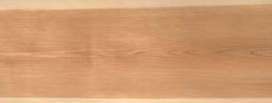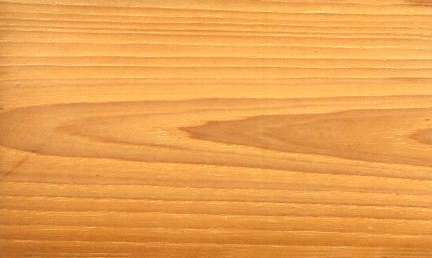  
Bitternut hickory (Carya cordiformis)
Family: Juglandaceae
Common names: Bitternut, Bitternut hickory, Hickory, Pecan, Swamp hickory
Distributed in: Canada, United States (North America)
Distribution overview: Bitternut hickory's range extends from southwestern New Hampshire, Vermont, Maine, and southern Quebec; west to southern Ontario, central Michigan, and northern Minnesota;, and south to eastern Texas and northern Florida.It is most common from southern New England west to Iowa and from southern Michigan south to Kentucky. Bitternut hickory is possibly the most widely and uniformly distributed hickory, being found as far north as southern Quebec, Canada and as far south as the Gulf Coast of Louisiana. It is found throughout the Eastern United States from New Hampshire south to Florida and west to Minnesota and eastern Texas. The species occurs on a wide range of sites, from dry upland sites in the southwestern part of its range to low wet woods in Louisiana. Bitternut is a major component of the White Oak-Red Oak-Hickory forest in the northern U.S. and of the Swamp Chestnut Oak-Cherrybark Oak forest in the south.
Common uses: Building materials, Chairs, Chests, Concealed parts (Furniture), Decorative veneer, Desks, Dining-room furniture, Domestic flooring, Dowell pins, Dowells, Drawer sides, Figured veneer, Fine furniture, Floor lamps, Flooring, Fuelwood, Furniture , Furniture components, Furniture squares or stock, Handles, Hatracks, Interior construction, Interior trim, Kitchen cabinets, Ladders , Living-room suites, Millwork, Office furniture, Paneling , Parquet flooring, Poles, Radio - stereo - TV cabinets, Rustic furniture, Shafts/Handles, Stools, Sub-flooring, Tables , Tool handles, Turnery, Vehicle parts
Environment profile: Widespread
Tree size: Trunk diameter is 150-200 cm
Colors: the heart isWhite, Yellowand the sapwoodWhite, Yellow.The grain isStraight, the textureMediumand the lusterMedium
Natural durability: Very durable, Very little natural resistance
Odor: No specific smell or taste
Kiln Schedules: T8 - D3 (4/4) T6 -D1 (8/4) US
Kiln Drying Rate: Drying rate is fairly rapid to fast
Drying Defects: Slight surface checking, Slight twist/warp
Ease of Drying: Variable results.
Comments: 'bird pecks' leave residue Deposits in the wood Mineral Deposits - Magnesium carbonate deposits are often present and 'Bird pecks' leave residue that crystallizes
Blunting Effect: Severe effect
Boring: Good (75+ pieces out of 100 will yield good to excellent results)
Carving: Fairly Difficult to Very Difficult
Cutting Resistance: Moderate to saw
Gluing: Fairly Difficult to Very Difficult
Mortising: Fairly Difficult to Very Difficult
Moulding: Requires special attention.
Movement in Service: Requires special attention.
Nailing: Fairly Easy to Very Easy, Satisfactory nailing properties
Planing: Special attention required
Resistance to Impregnation: Resistant sapwood
Response to hand tools: Fairly Difficult to Difficult to Work
Routing recessing: Fairly Difficult to Very Difficult
Sanding: Good sanding qualities
Veneering qualities: Difficult to veneer, Suitable for peeling
Steam bending: Very good
Screwing: Fairly Easy to Very Easy, Good screw holding properties; Turning: Fairly Difficult to Very Difficult
Painting: Fairly Difficult to Very Difficult
; Polishing: Finishes well; Staining: Fairly Difficult to Very Difficult; Varnishing: Fairly Easy to Very Easy;
- Numerical data Metric
- Numerical data English
- Strength properties
- References
 |
 |
 |
 |
| Item |
Green |
Dry |
Metric |
| Specific Gravity |
0,56 |
0,62 |
|
| Density |
|
|
kg/m3 |
| Bending Strength |
695 |
1157 |
kg/cm2 |
| Crushing Strength |
54 |
111 |
kg/cm2 |
| Hardness |
|
|
kg |
| Impact Strength |
164 |
164 |
cm |
| Shearing Strength |
|
85 |
kg/cm2 |
| Stiffness |
106 |
142 |
1000 kg/cm2 |
| Tangential Shrinkage |
9 |
|
% |
| Radial Shrinkage |
5 |
|
% |
| Weight |
1458 |
913 |
kg/m3 |
| Maximum Load |
1,26 |
1,4 |
cm-kg/cm3 |
| Toughness |
|
|
cm-kg |
| Static Bending |
275 |
551 |
kg/cm2 |
|
 |  |  |  | | Item | Green | Dry | English | | Bending Strength | 9898 | 16464 | psi | | Crushing Strength | 779 | 1583 | psi | | Impact Strength | 65 | 65 | inches | | Maximum Crushing Strength | 4351 | 7379 | psi | | Shearing Strength | | 1215 | psi | | Static Bending | 3920 | 7840 | psi | | Stiffness | 1519 | 2029 | 1000 psi | | Work to Maximum Load | 18 | 20 | inch-lbs/in3 | | Specific Gravity | 0.56 | 0.62 | | | Weight | 91 | 57 | lbs/ft3 | | Radial Shrinkage | 5 | | % | | Tangential Shrinkage | 9 | | % | | Volumetric Shrinkage | 13 | | % | |
Max. crushing strength = high
Hardness (side grain) = hard
Bending strength (MOR) = high
Hickory is described as unique among temperate hardwoods due its combination of high bending strength, stiffness, hardness, and resistance to shock. It resists suddenly applied loads exceptionally well, and is far superior to Ash (Fraxinus ) in that respect. The densest and toughest hickory wood is produced by fast grown, wide-ringed trees. Density of such wood is considerably higher than that of Ash, especially in the seasoned condition.
Boone, R. S., C. J. Kozlik, P. J. Bois, and E. M. Wengert.1988.Dry Kiln Schedules for Commercial Woods:Temperate and Tropical.United States Department of Agriculture, Forest Service, General Technical Report FPL-GTR-57, Forest Products Laboratory, Madison, Wisconsin.Kaiser, Jo-ann.Wood of the Month:Hickory.Wood and Wood Products, September, 1990.Page 46.Little, E.L.1980.The Audubon Society Field Guide to North American Trees - Eastern Region.Published by Arthur A. Knopf, New York.Panshin, A. J. and C. deZeeuw.Textbook of Wood Technology.McGraw-Hill Series in Forest Resources.McGraw-Hill Book Company, New York.Rendle, B.J. Editor. 1969. World Timbers, Volume Two - North & South America (Including Central America and the West Indies). Published by Ernest Benn Limited, Bouverie House, Fleet Street, London.USDA.1987.Wood Handbook:Wood as an Engineering Material.Agriculture Handbook No. 72.United States Department of Agriculture, Forest Service, Madison, Wisconsin.USDA.1988.Dry Kiln Operators Manual, Preliminary Copy.Forest Service, Forest Products Laboratory, Madison, Wisconsin.
|










